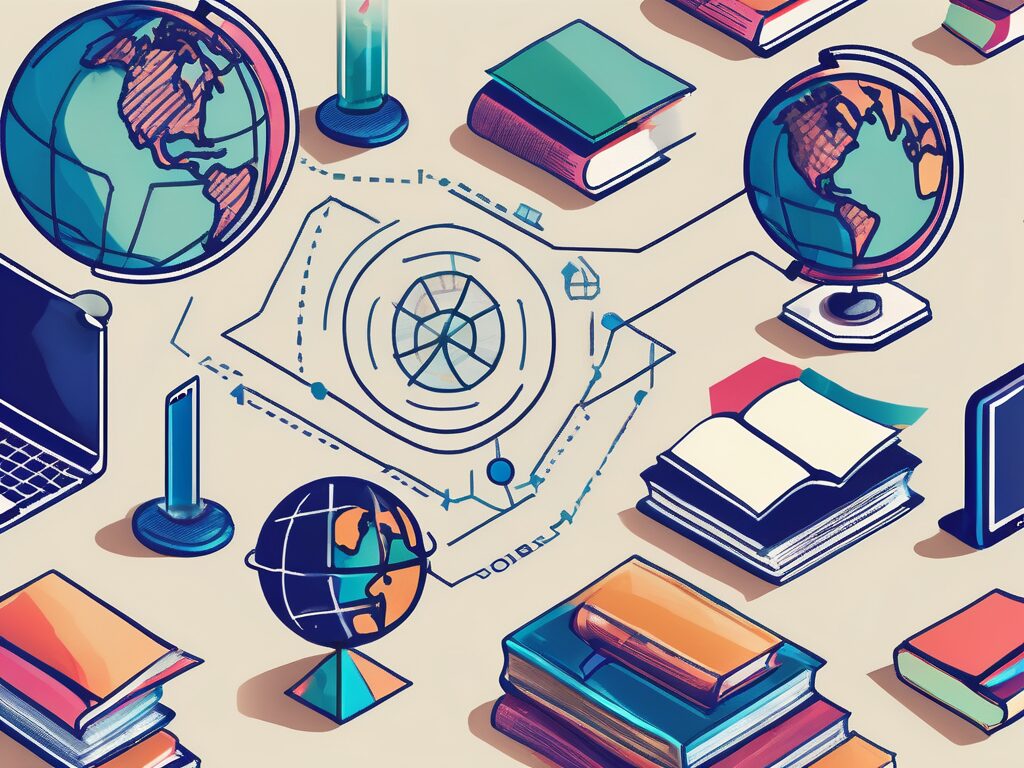The International Postgraduate Certificate in Education (IPGCE) is a globally recognised qualification that equips educators with the skills and knowledge to teach in an international context. In today’s digital age, the IPGCE has embraced technology to enhance teaching and learning. This article explores ten digital resources that are revolutionising the IPGCE, making education more engaging, interactive and effective.
1. Virtual Learning Environments (VLEs)
Virtual Learning Environments (VLEs) are online platforms that provide a range of tools to aid teaching and learning. They’re a bit like a digital classroom, where teachers can share resources, set assignments, and interact with students.
Popular VLEs used in the IPGCE include Moodle and Blackboard. These platforms offer a variety of features, such as discussion forums, quizzes, and gradebooks. They also support multimedia content, enabling teachers to create engaging and interactive lessons.
2. Digital Assessment Tools
Assessment is a crucial part of education, and digital tools are making this process more efficient and effective. Tools like Turnitin not only check for plagiarism but also provide detailed feedback to help students improve their work.
Other digital assessment tools used in the IPGCE include Quizlet and Kahoot, which make learning fun through interactive quizzes. These tools provide instant feedback, helping students to identify areas for improvement immediately.
3. Online Collaboration Tools
Collaboration is a key skill in the 21st-century workplace, and online tools are making it easier for students to work together, even when they’re not in the same location. Google Workspace, for example, allows students to collaborate on documents, presentations, and spreadsheets in real-time.
Other online collaboration tools used in the IPGCE include Padlet and Trello. These tools allow students to share ideas, organise tasks, and work together on projects, fostering a collaborative learning environment.
4. Digital Content Creation Tools
Digital content creation tools are empowering students to express their understanding in creative and innovative ways. Tools like Adobe Spark and Canva allow students to create visually appealing presentations, infographics, and videos.
These tools not only enhance students’ digital literacy skills but also allow them to demonstrate their understanding in a variety of formats, catering to different learning styles.
5. Learning Management Systems (LMS)
Learning Management Systems (LMS) are comprehensive platforms that manage all aspects of the learning process. They’re a bit like a digital school, where teachers can plan lessons, track student progress, and communicate with parents.
Popular LMS used in the IPGCE include Canvas and Schoology. These platforms offer a range of features, such as lesson planning tools, gradebooks, and communication tools, making it easier for teachers to manage their classes.
6. Educational Apps
Educational apps are making learning more accessible and engaging. Apps like Duolingo and Khan Academy offer interactive lessons in a variety of subjects, allowing students to learn at their own pace.
Other educational apps used in the IPGCE include Nearpod and Seesaw. These apps provide interactive activities and digital portfolios, enhancing student engagement and learning.
7. E-books and Online Libraries
E-books and online libraries are making it easier for students to access a wide range of resources. Platforms like Project Gutenberg and Open Library offer thousands of free e-books, while online libraries like JSTOR provide academic articles and journals.
These resources not only enhance students’ research skills but also promote independent learning, a key skill in higher education and the workplace.
8. Video Conferencing Tools
Video conferencing tools are enabling remote learning, a key feature of the IPGCE. Tools like Zoom and Microsoft Teams allow teachers and students to interact in real-time, regardless of their location.
These tools not only support synchronous learning but also provide features like breakout rooms and whiteboards, enhancing interaction and collaboration.
9. Interactive Whiteboards
Interactive whiteboards are transforming the traditional classroom, making lessons more engaging and interactive. Tools like SMART Board and Promethean provide a range of features, such as touch recognition, multi-user capability, and a variety of digital inking colours.
These tools not only enhance student engagement but also support a variety of teaching strategies, such as direct instruction and collaborative learning.
10. Augmented and Virtual Reality
Augmented and Virtual Reality (AR and VR) are providing immersive learning experiences. Tools like Google Expeditions and ClassVR allow students to explore virtual environments, enhancing their understanding of complex concepts.
These tools not only engage students but also provide a new dimension to learning, making abstract concepts tangible and real.
In conclusion, digital resources are revolutionising the IPGCE, enhancing teaching and learning in a variety of ways. By embracing these resources, educators can provide a modern, engaging, and effective education that prepares students for the digital age.
Take Your Teaching Career to the Next Level with The IQTS at UWE
As you embrace the digital revolution in education with the IPGCE, consider further enhancing your professional development with The International Qualified Teacher Status (iQTS) programme at UWE. Overcome the barriers of strict international qualification requirements, accelerate your career progression, connect with a global community of educators, and gain a comprehensive understanding of international curricula. With the iQTS, you’re not just adapting to the digital era—you’re leading it. Make Your Next Step today and join a programme that offers flexibility, growth, and a pathway to success in the international teaching landscape.

